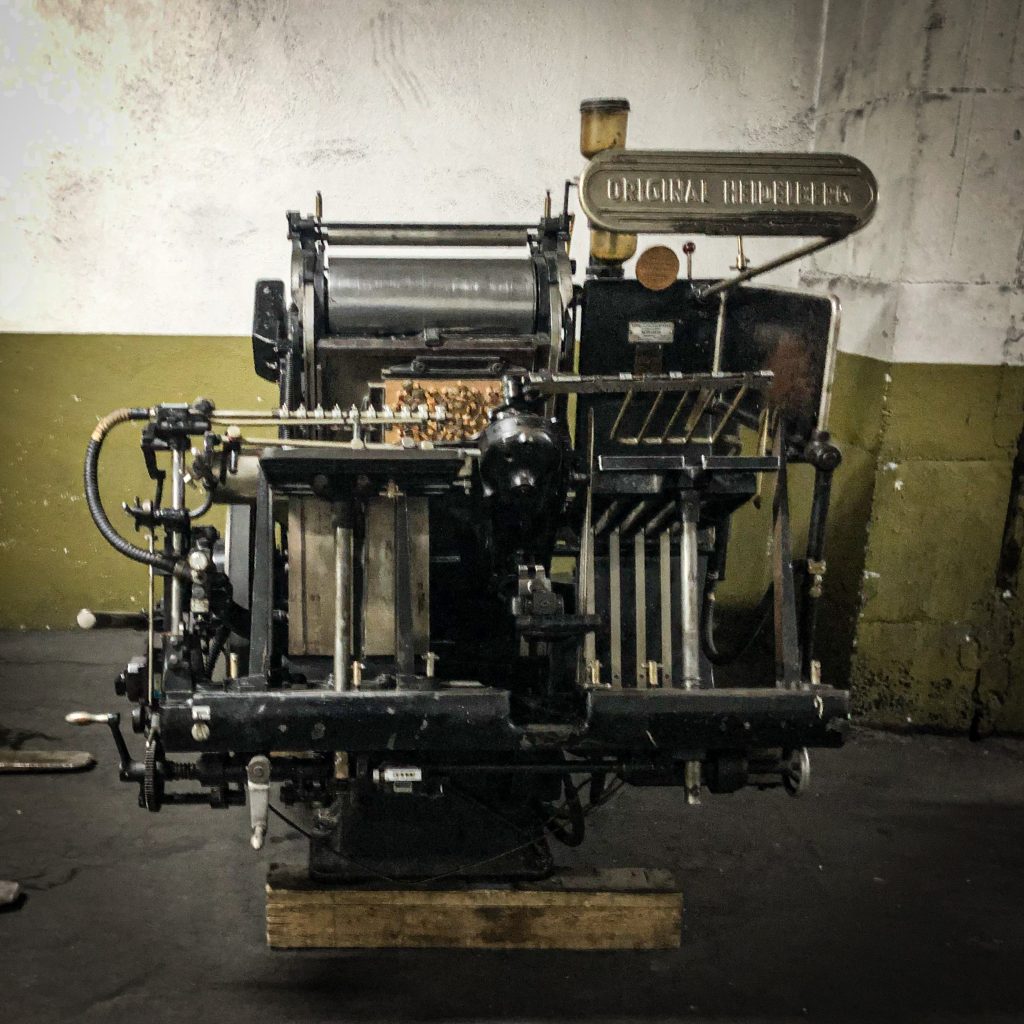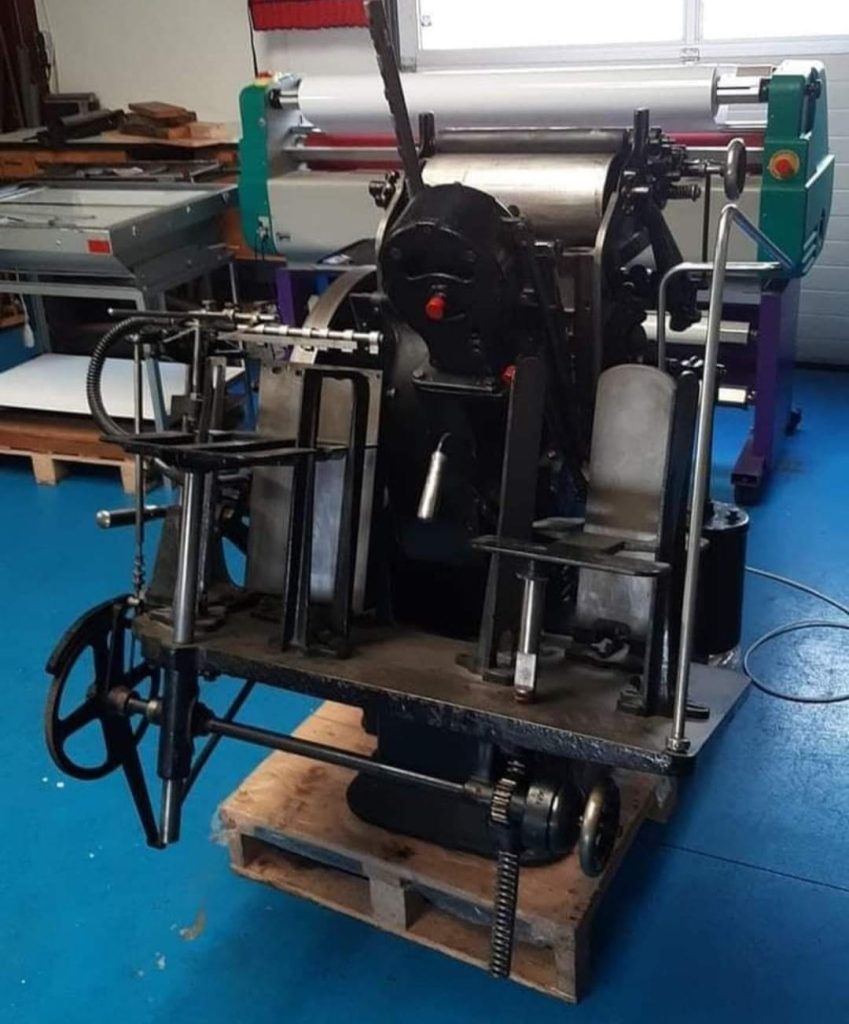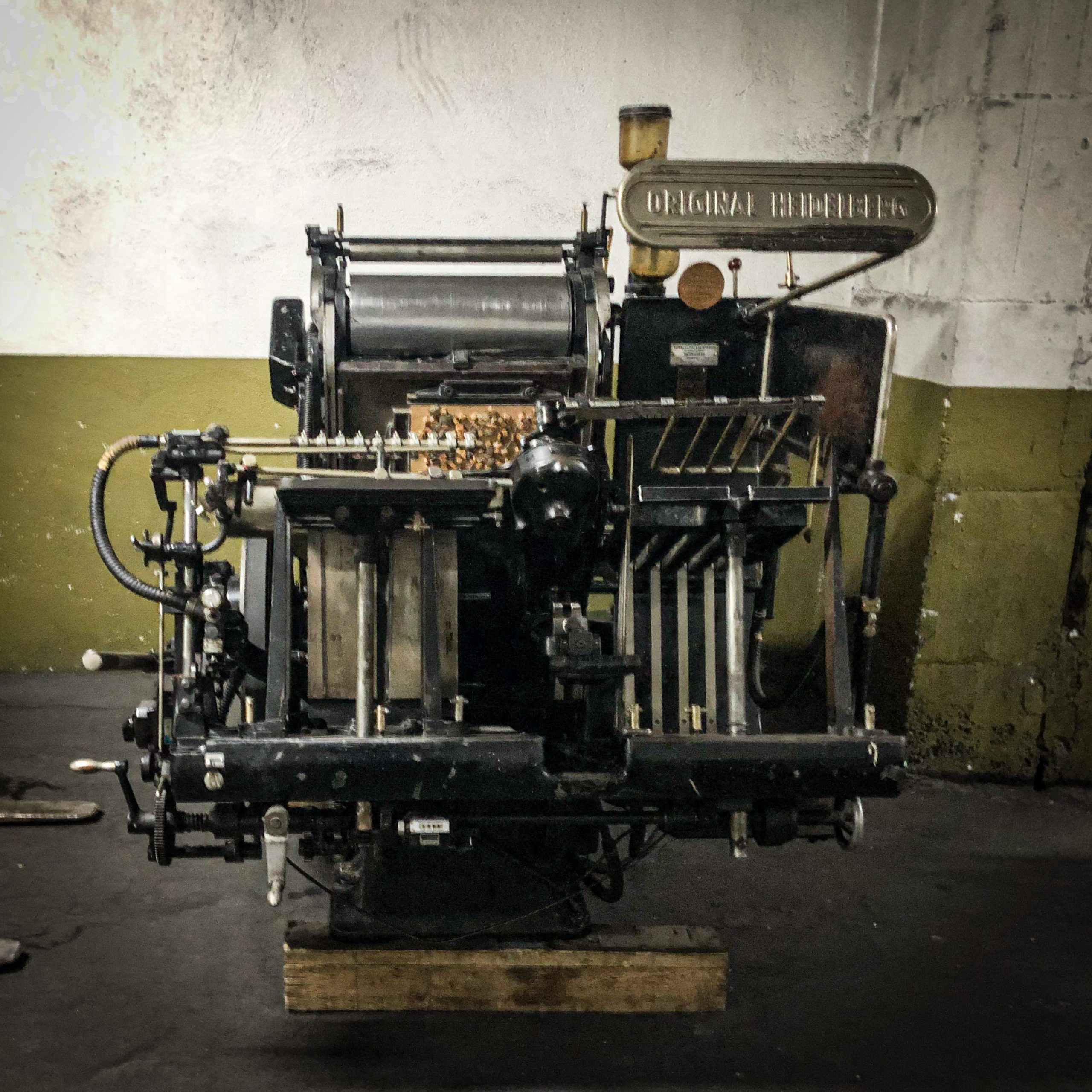A story worth telling.
Since I was a child, I have seen these machines in my family's printing shop. When they are in operation, they have an almost hypnotic ability to attract your attention. The movement of the blades is almost organic and reminds me of the movement of the arms of that giant that made Don Quixote feel both fear and fascination. You can't help but go towards them and want to dominate the monster, engage in dialogue and even dance, understanding its harmony, so that the magic of letterpress printing emerges, printing incredible pieces that in many cases tell great love stories in the form of wedding invitations.
I found this interesting text on the Internet that tells the story of these machines, the Minervas Heidelberg. It was written by Rezen Gráfica and Jânio kindly allowed me to reproduce it. I hope you like it and find it interesting. Manuel
Looking back 103 years, when Heidelberg’s Original Minervas ushered in a new evolution in the printing industry, the printer’s manual labor was virtually eliminated and printing speed increased significantly. These advancements were crucial steps in increasing printing productivity and the quality of the printed product.
The introduction of powder spraying, automatic roller washing, central lubrication and rubber rollers were innovations that no other 20th century printing machine impacted as profoundly as the Minerva T.
A particular feature of this machine is the blowing and suction of pneumatic suction cups, which lift the sheet into the feeder.
The nickname "Windmill" is due to the windmill-like shape of the gripper arms that transport the sheet from the feeder to the printing area and then to the delivery table. However, this system was not invented by Heidelberg.
With automation, the Minerva was already reaching a speed of 3,000 sheets per hour in 1921, the year of its launch, exactly 103 years ago.
The Minerva can print, die-cut, perforate, emboss and number, with some models also equipped with hot-stamping devices. Since its launch, the Heidelberg Minerva has offered numerous improvements over its competition.
It featured an electric drive built into the machine, automatic sheet feeding and transport with integrated inking supplied by an ink reservoir rather than a platen, allowing for a continuous supply of ink. This crucial innovation and automatic sheet feeding and transport were not developed by Heidelberg. This invention was by a Cologne printer named Cilbe, who sold the patent for the windmill-shaped gripper arms to Heidelberg, allowing the Minerva T to become an icon of the industry. It was thanks to the efficiency of this gripper system and the speed of printing that Heidelberg's automatic Minerva, Model T, became a worldwide best-seller.
The Minerva Heidelberg was produced in 26x36 cm and also 34x46 cm formats.
For larger formats, this technology no longer made sense, partly due to physical limitations, making cylindrical printing machines more suitable, such as Heidelberg's equally famous flatbed cylinder press, the KSBA (460×585 mm).
Over the years, the Minerva T underwent improvements, notably the creation of the movable side guide, which allowed for perfect print registration.
Production ceased in 1985. Offset printing made letterpress obsolete, but hundreds of Minerva T machines are still in use today, mainly due to their versatility. Very few are used for printing, with the majority being used for die-cutting, numbering and embossing.
Production of the Minerva T began in 1921, although it was introduced in 1914, with production delayed due to World War I.
Approximately 200,000 units were produced worldwide between 1921 and 1985. Thousands of Heidelberg Minervas are still installed around the world and continue to be a valuable asset for many printers. Pictured here, one from 1959 (Our Wilhelmina Heidelberg GT) and one from 1923.



